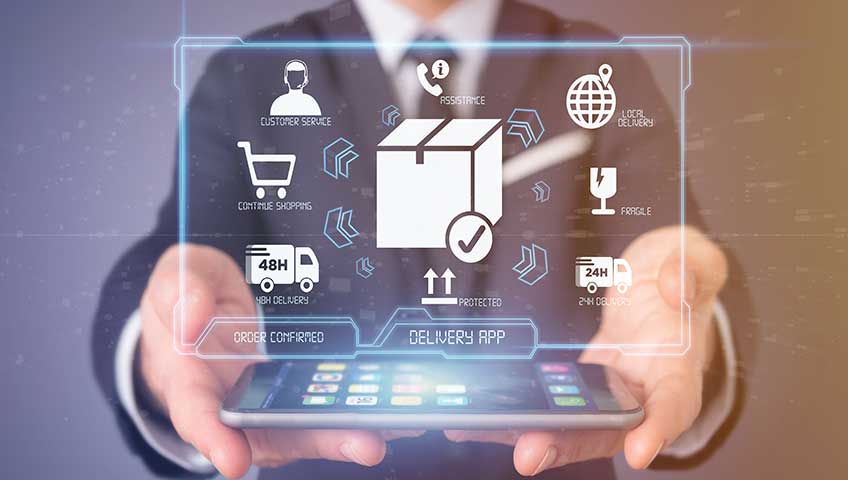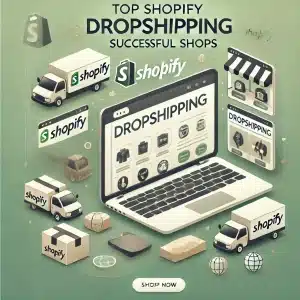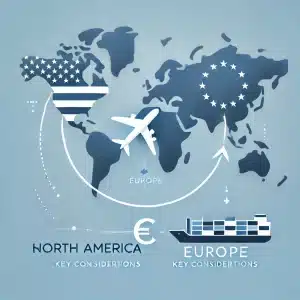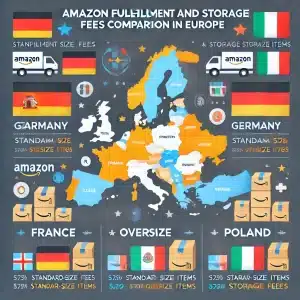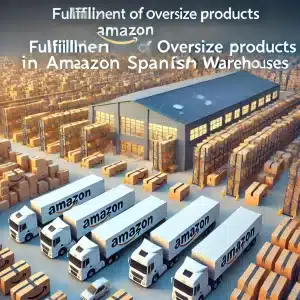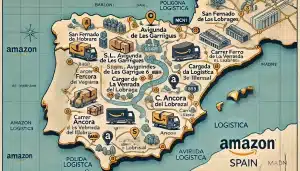Small eCommerce businesses often find that handling many or all operations in-house isn’t always the most productive. Third-party logistics services can help you expand your operations while operating on a shoestring budget. By partnering with pros on one of the most important aspects of your eCommerce business, you can focus on marketing, growth, and customer satisfaction.
A third-party logistics company can store your inventory for you and pick, pack, and ship your products. 3PL is the vital link between your manufacturing operations and your customers. When your order fulfillment operations run smoothly, your customers are happy and your business grows. Excellent fulfillment is key to success for eCommerce companies.
Before working with a third-party logistics company, it’s important to understand what 3PL is. This piece details how you can integrate third-party logistics into your operations and how to find the best 3PL partner. If you already know that this is what you’re looking for, check out our 3PL services.
What Is 3PL – Third-Party Logistics?
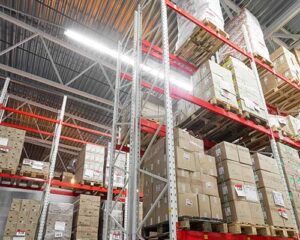 Third-party logistics (3PL) is often used interchangeably with fulfillment warehouse or fulfillment center. Companies that provide 3PL services offer many of the same services as order fulfillment companies, including warehousing, inventory management, shipping and receiving, FTL and LTL freight shipping, picking and packing, kitting and customization, and reverse logistics (returns).
Third-party logistics (3PL) is often used interchangeably with fulfillment warehouse or fulfillment center. Companies that provide 3PL services offer many of the same services as order fulfillment companies, including warehousing, inventory management, shipping and receiving, FTL and LTL freight shipping, picking and packing, kitting and customization, and reverse logistics (returns).
A third-party logistics company acts as an eCommerce fulfillment company by providing all the services you need to outsource your logistics operations. Different 3PL service companies specialize in different types of fulfillment and warehousing. Some are equipped for cold fulfillment and can store and ship food products that need to be refrigerated or frozen. Other 3PL companies are prepared to store and ship hazardous materials.
Fundamentals of Third-Party Logistics (3PL)
Third-party logistics providers manage inbound and outbound transportation for their clients, as well as warehousing. Most 3PL companies own or lease warehouse space, which they provide to their clients. They generally don’t own their own fleet of trucks but contract with other carriers for freight and shipping.
Third-party refers to the fact that you’re outsourcing your order fulfillment. You don’t own the warehouse. Instead, you rent shelf space for your products in a large warehouse that stores products for multiple companies. Warehouse employees receive your products and place them into inventory. They pick items from shelves to fill orders and pack them securely for shipping. The 3PL works with various carriers to deliver orders to your clients.
Third-party logistics warehouses are designed to maximize speed and efficiency. As your business grows, they can handle the extra volume and you can expand your capacity without hiring additional staff. A 3PL can work with you on ways to reduce your shipping costs and delivery times. When you use a 3PL company for your eCommerce fulfillment, you get the benefit of experience and focus.
Let’s delve into the specifics of how outsourced fulfillment works with your business.
The Process of Third-Party Logistics Operations
When outsourcing fulfillment, products are shipped directly from the factory to the third-party logistics warehouse. Upon inventory arrival, the 3PL provider can offer various services as part of the process. Here are a few key elements of the 3PL operation:
Integration of E-commerce Platforms
To thrive in the e-commerce industry, most businesses rely on multichannel selling. For this reason, having robust IT support is essential for your fulfillment warehouse. Top-notch fulfillment companies should have the ability to seamlessly integrate with various sales platforms. Your chosen provider should be able to support all your sales channels, or alternatively, develop a custom API for you. Additionally, you should have access to a dashboard where you can monitor and track the status of your orders in real-time through an online platform.
Inventory Management
When collaborating with a third-party logistics provider, you no longer have to manage your inventory alone. Your 3PL partner brings valuable expertise in inventory management to the table. Your account representative can apply their learnings from working with various e-commerce companies to assist you in managing your stock. Don’t hesitate to seek their advice on topics such as restocking levels, supply chain management, and recommended seasonal inventory levels.
Efficiently Executing the Picking, Packing, and Shipping Process
The process of order fulfillment heavily relies on the efficient execution of pick, pack, and ship services. Upon receiving an order through one of your sales channels, it is transmitted to your fulfillment warehouse. Subsequently, a skilled picker retrieves the items for the order from the shelves. Next, a meticulous packer selects an appropriate box size and proceeds to package the order, while also affixing the necessary shipping label. Finally, the diligent shipper ensures that the order is promptly collected by the appropriate carrier as soon as it is ready for dispatch.
Shipping on the Same Day of Purchase
If you use a third-party logistics provider, you may have access to their same-day shipping option. Essentially, this service ensures that your customers’ orders are promptly picked, packed, and shipped on the very same day they are received. However, it’s important to note that there is often a cut-off time for same-day shipping, depending on the provider. For instance, at Red Stag Fulfillment, there are two tiers of same-day shipping services available. The first option has a cut-off time of 3 pm, while the other can ship orders received as late as 5 pm on the same day. By leveraging same-day shipping, you can significantly improve the delivery time of your orders, thereby leading to higher levels of customer satisfaction.
Managing Product Returns
In the world of eCommerce, product returns are an inevitable reality, and reverse logistics is the process of managing them. The frequency of returns can vary depending on the type of merchandise you offer, with items such as clothing and shoes experiencing higher return rates than other products. Fortunately, your eCommerce fulfillment provider can handle the entire process of receiving and processing returned items on your behalf. As part of the reverse logistics process, the returned items are inspected to determine whether they are damaged or can be resold. Effectively managing reverse logistics can significantly reduce the time it takes to make undamaged products available for purchase again.
Comparing 3PL Services and Drop Shipping
When it comes to outsourcing your order fulfillment, there are two primary options: drop shipping and 3rd-party logistics. While both options involve a third party handling your fulfillment, there are key differences between them. Understanding these differences is crucial in determining which approach is most suitable for your business.
3PLs vs. Order Fulfillment
In comparison to drop-shipping, third-party fulfillment, sometimes referred to as order or eCommerce fulfillment, entails purchasing and storing merchandise up front.
When utilizing 3rd-party logistics, the supply chain for your eCommerce business typically follows these steps:
- You source the products that you plan to sell on your online store.
- You invest the necessary capital to purchase the raw materials or products beforehand, unless you use pre-orders, such as through crowdfunding.
- Your merchandise is shipped to the order fulfillment warehouses that you have contracted with for your 3PL services.
- Your available inventory is made available on your online store or eCommerce platforms.
- Customers place orders on your online store or platforms.
- The order information is relayed from your sales platforms to your 3PL warehouses.
- Experienced warehouse personnel pick, pack, and ship your customers’ orders using the products that you have already purchased and stored at the warehouse.
- Your customers receive their orders in a timely manner.
Advantages of Third-Party Logistics
This operational model has several advantages:
- Reduced cost of goods sold. When you buy products in bulk, you pay the wholesale price. The more you buy, the lower your costs will be and the greater your profit margins will be.
- Greater product sourcing flexibility. When you use an eCommerce fulfillment business model, you can source products from multiple manufacturers more easily. Because all of your items will be stored in the same warehouse, orders containing items from multiple suppliers can ship in the same box. This reduces shipping costs.
- More authority over your logistical processes. You are free to select an order fulfillment partner who offers the services your clients demand
- Faster completion of orders. You can choose a third-party logistics provider with nearby warehouses to get your items delivered right away.
What Exactly Is Drop Shipping?
 Dropshipping necessitates little or no initial capital investment. It can be a great way to get a new business off the ground on the cheap. Some eCommerce entrepreneurs start their businesses with drop shipping and then transition to traditional order fulfillment once they understand their markets. The disadvantage of this model is that you will pay a higher wholesale price for your products, resulting in lower profit margins.
Dropshipping necessitates little or no initial capital investment. It can be a great way to get a new business off the ground on the cheap. Some eCommerce entrepreneurs start their businesses with drop shipping and then transition to traditional order fulfillment once they understand their markets. The disadvantage of this model is that you will pay a higher wholesale price for your products, resulting in lower profit margins.
A drop shipping supply chain looks like this:
- You do not own or have control over the inventory you sell. You make a drop shipping agreement with a manufacturer.
- Then you list items for sale in your online store.
- Customers place orders through your online platforms.
- You pass those orders along to the manufacturer. You must now pay the manufacturer. You only pay for the products that your customers purchase.
- Items are shipped directly to your customers by the manufacturer.
Advantages of Drop Shipping
For some eCommerce enterprises, drop shipping offers benefits.
- Low initial investment. With drop shipping, you may launch a new business on a tight budget. The setup of your online store represents your only investment.
- Low danger. You only purchase items that customers desire. You don’t want to take a chance on investing in products that you won’t sell or that require steep discounts to move.
- Minimal overhead. To store your inventory, you don’t have to pay for warehouse space. Up until you sell them, the products remain with the producer.
How Can 3PL Services Benefit Your Ecommerce Site?
A wonderful method to expand the capability and market reach of your eCommerce firm is to outsource your fulfillment. You won’t need to add any more employees, but you will be able to accomplish more. You just pay for the services and storage space you really utilize. And you hire professionals to take care of your logistics. Your 3PL’s warehouse experts can improve the efficiency of your fulfillment processes.
While fulfillment may not be the most attractive aspect of your eCommerce store, it is the core of your operation. You could lose clients and money due to poor fulfillment. Better fulfillment might result in more favorable evaluations and devoted customers. The growth curve of your company will be influenced by fulfillment services. Excellent third-party logistics can ultimately keep that trend line rising.

